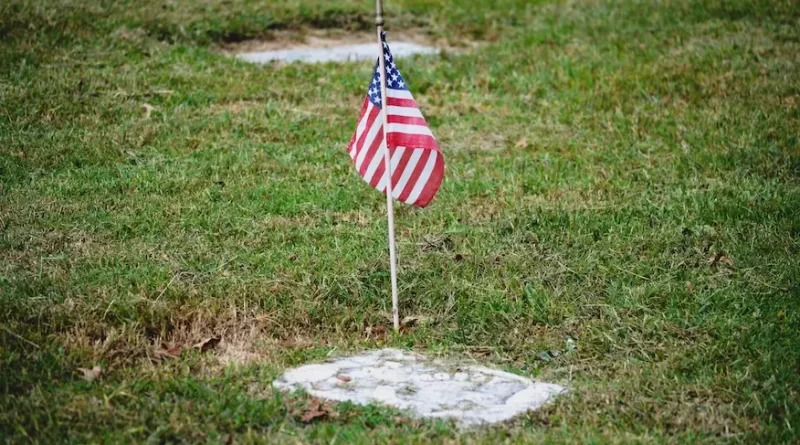How Unresolved Legal Complexities Shape the Camp Lejeune Lawsuit
The Camp Lejeune Water Contamination Lawsuit stands as a testament to a tragic incident that has left an indelible mark on countless lives. Over one million individuals at the North Carolina military facility were exposed to hazardous chemicals through water between 1953 and 1987.
The contamination’s insidious legacy gave rise to a legal battle seeking accountability and compensation for the victims. However, the road to resolution has been fraught with challenges, spanning decades of frustration and delays.
First Coast News reports that nearly one year has elapsed since the government enacted a law to aid the victims of the contamination. Despite the passage of the law, the government has not reached a resolution for any of the filed claims. According to reports, approximately 75,000 claims have been submitted so far.
In this article, we will dive into the key aspects that have shaped the Camp Lejeune lawsuit. We will be exploring the lasting impact of the contamination and the delays and complexities associated with the litigation.
Table of Contents
The Legacy of Contamination
Camp Lejeune’s tainted legacy of water contamination forms the foundation of this lawsuit. Over the course of several decades, thousands of veterans, family members, and workers were affected, leading to a surge of claims against the government.
The extent of the contamination and its severe health implications drive the urgency for timely resolution. Countless victims suffer from various illnesses, including cancer, Parkinson’s disease, and other debilitating health issues, intensifying the need for accountability and compensation.
The Delays and Frustration
Unresolved claims have become a major source of frustration for claimants and their families. While thousands have filed claims seeking justice, the process of reaching a resolution has been excruciatingly slow.
As reported by Bloomberg Law News, over 900 lawsuits have been filed in relation to the Camp Lejeune water contamination so far. However, the anticipated flood of suits that court administrators expected has not materialized.
The Navy has attributed the slowdown in the review of claims to a lack of resources. The government estimates that the potential Camp Lejeune water contamination settlement amounts could reach up to $21 billion once the claims are processed.
TorHoerman Law notes that it is difficult to determine the average payout for each individual settlement. This is partly due to the litigation still being in its early stages. Another reason is the unique nature of each claimant’s case and the wide range of health issues and damages suffered by the victims.
The Complexity of Legal Procedures
Navigating the complex legal landscape of the Camp Lejeune lawsuit presents significant challenges for claimants and their legal representatives. Filing claims, gathering evidence spanning decades, and complying with intricate legal requirements demand time, effort, and resources.
The intricacies of the legal procedures often leave victims feeling overwhelmed and uncertain about their prospects for justice. Moreover, the complex web of regulations further slows down the resolution process, contributing to the prolonged battle for restitution.
The Struggle for Accountability
At the heart of the Camp Lejeune lawsuit is the quest for accountability. Determining the parties responsible for the contamination has been a convoluted task.
Identifying those liable and ensuring they are held accountable has proven to be a formidable challenge. This has added another layer of complexity to the legal battle. The government’s response and responsibility in addressing the claims have also been subjects of contention, leading to a protracted fight for justice.
Seeking Justice Amidst Tragedy
The Camp Lejeune lawsuit transcends mere legal proceedings. It embodies the lives and tragedies of those impacted by the toxic water. Individuals, families, and communities have been irreversibly affected, facing immense hardships and losses.
WHQR shared the story of Jerry Ensminger, an ex-Master Sergeant who served in the Marine Corps. He is one of the thousands affected by the contamination. In 1985, he lost his 9-year-old daughter, Janey, to childhood leukemia. At the time, the cause of her illness remained a mystery. Years later, studies confirmed that the chemicals present in the water at Camp Lejeune were linked to childhood leukemia.
These stories of affected individuals humanize the legal battle, shedding light on the urgency of finding a resolution to alleviate their suffering. The fight for justice is not just about financial compensation; it is about recognition, closure, and healing for those who have endured unimaginable challenges.
Key Takeaways
The Camp Lejeune water contamination lawsuit illustrates the enduring struggle for justice and accountability in the face of toxic exposure. The legal battle’s complexities and delays have left thousands of claimants frustrated and uncertain about the resolution process.
The urgent need for timely compensation arises from the severe health implications suffered by victims. Moreover, the quest for accountability has been complicated by the difficulty in determining responsible parties.
Beyond financial restitution, this lawsuit represents the profound human toll and emphasizes the importance of recognition and closure for those who endured immeasurable hardships. The Camp Lejeune lawsuit stands as a testament to resilience and the enduring pursuit of justice amidst tragedy.

